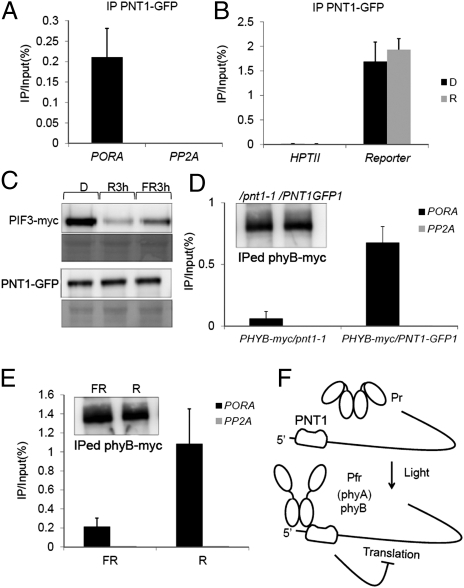Fig. 4.
PNT1 binds to the UTR of PORA mRNA and recruits phytochromes to inhibit the translation of PORA mRNA. (A) Immunoprecipitation of PORA mRNA by PNT1 using RIP. PP2A mRNA was used as a nonbinding control. (B) Light-independent immunoprecipitation of luciferase reporter mRNA with UTRs of PORA but not HPTII mRNA in transgenic plants. (C) PNT1 was not degraded in response to light. Unlike PNT1, PIF3 is rapidly degraded by light. R3h and FR3h indicate 3 h after the transfer of etiolated seedlings to red and far-red light, respectively. (D) PNT1-dependent immunoprecipiation of PORA mRNA by phyB-myc. phyB-myc/PNT1-GFP1 and phyB-myc/pnt1 indicate transgenic plants expressing phyB-myc either in the PNT1-GFP1 line or in the pnt1-1 mutant. (Inset) Amount of precipitated phyB-myc in different plants. (E) Light-dependent recruitment of phyB to PORA mRNA. R and FR indicate samples treated with either red light or far-red light before precipitation. (Inset) Amount of precipitated phyB-myc under different light conditions. (F) Model showing the translational repression of PORA mRNA by phytochromes and their interacting protein PNT1 (SD, n = 3).

